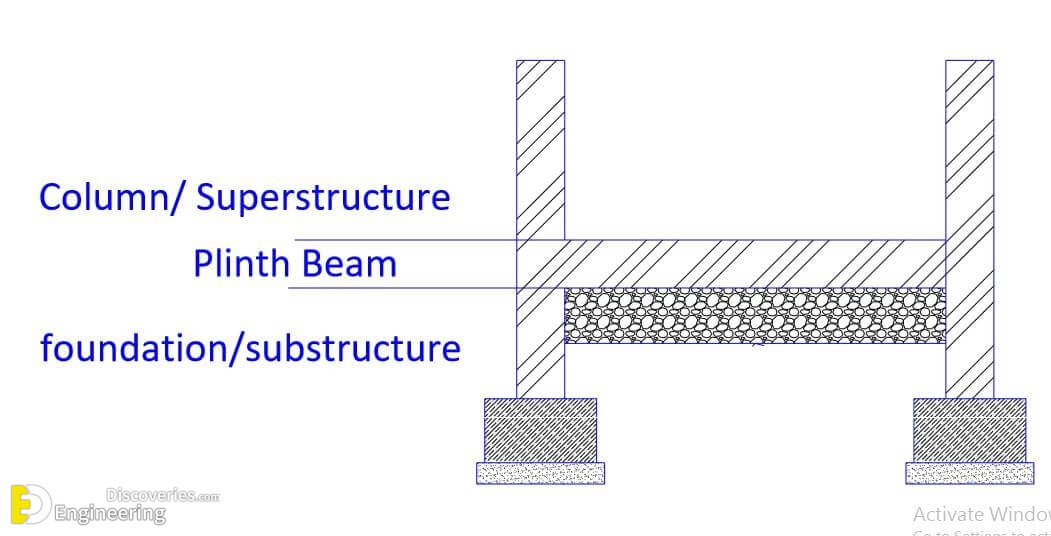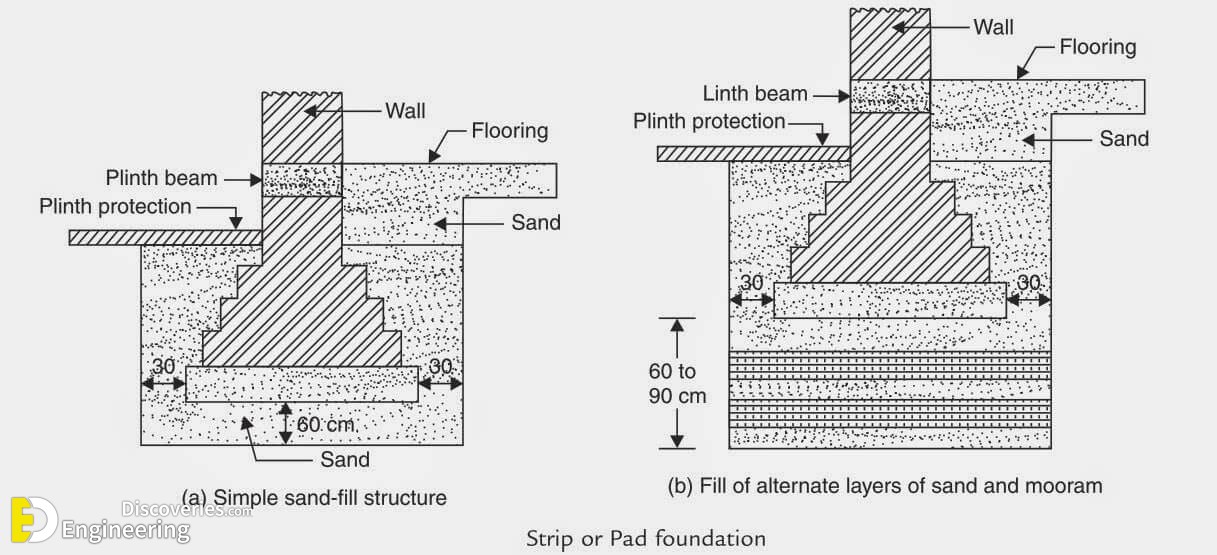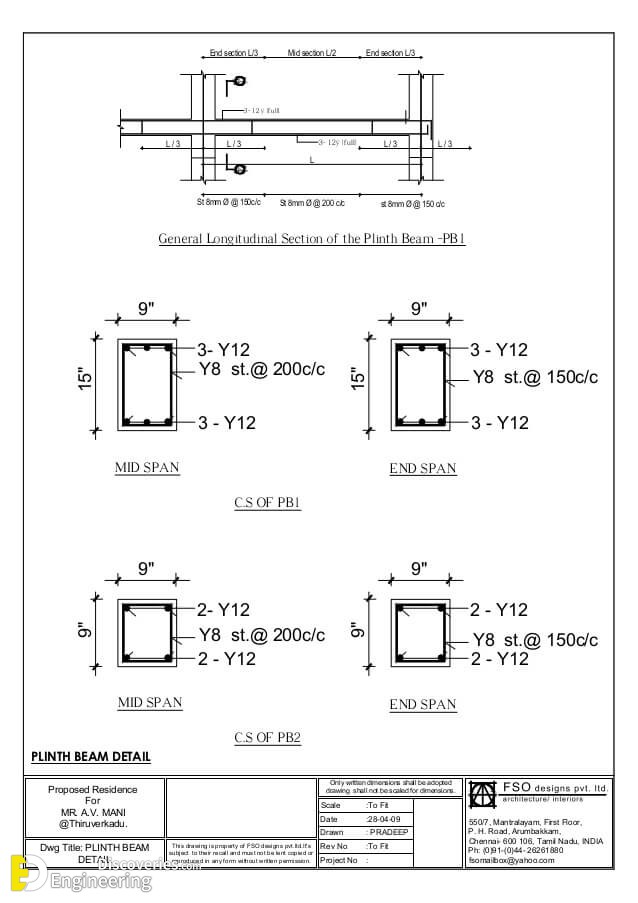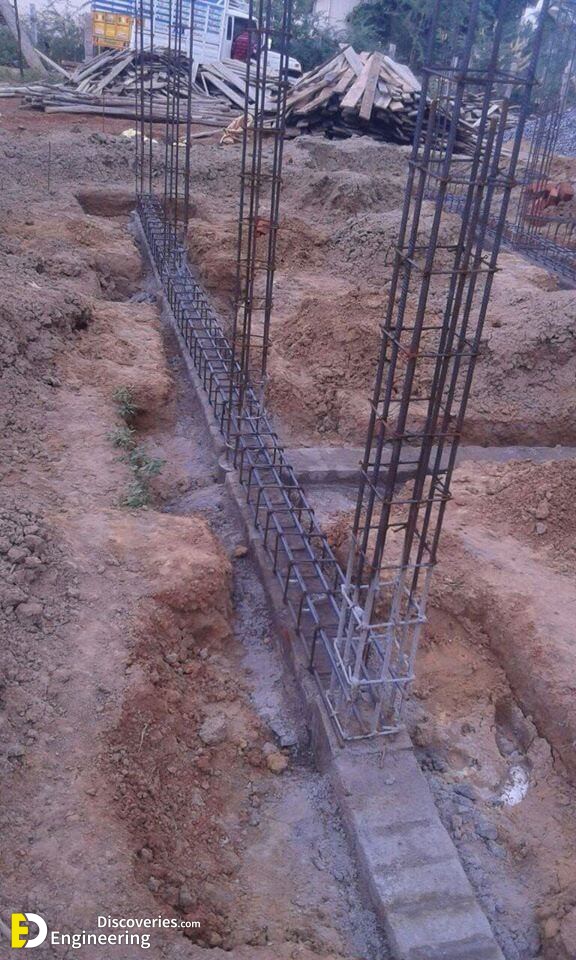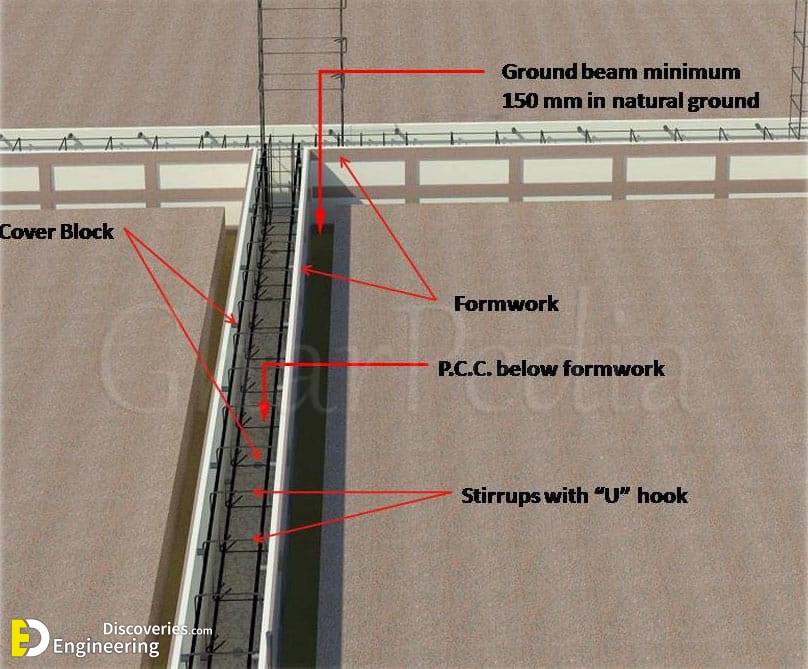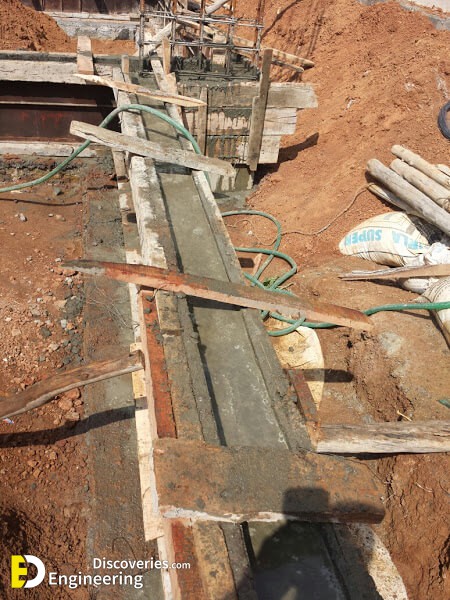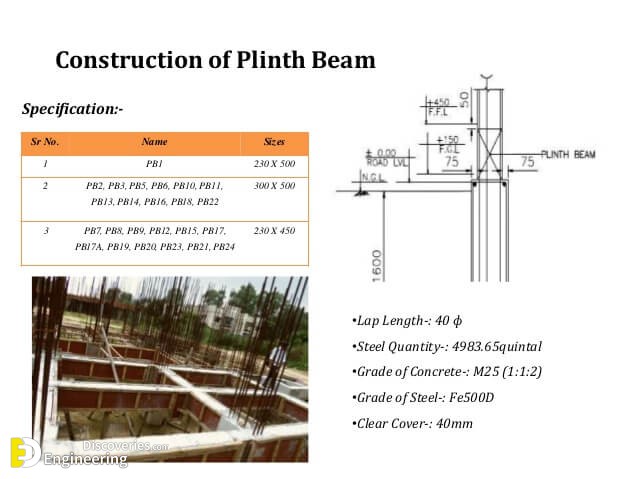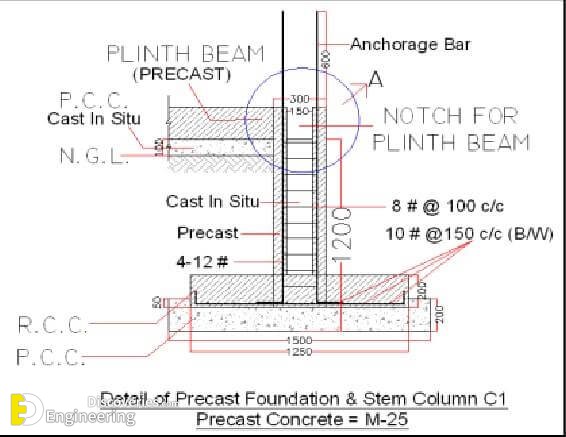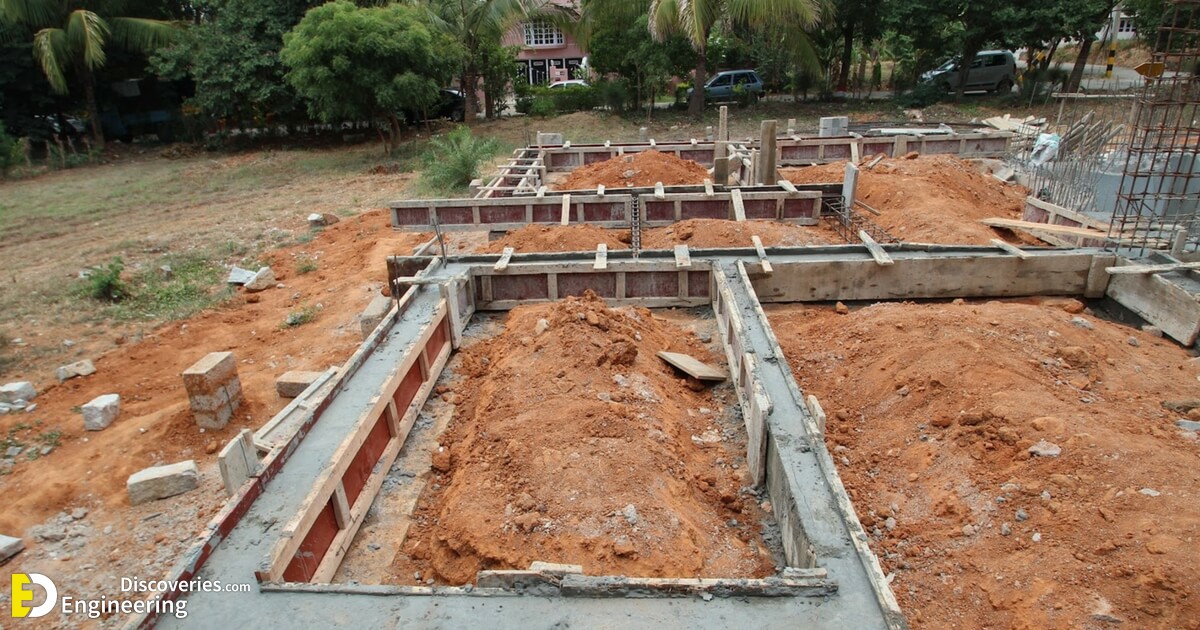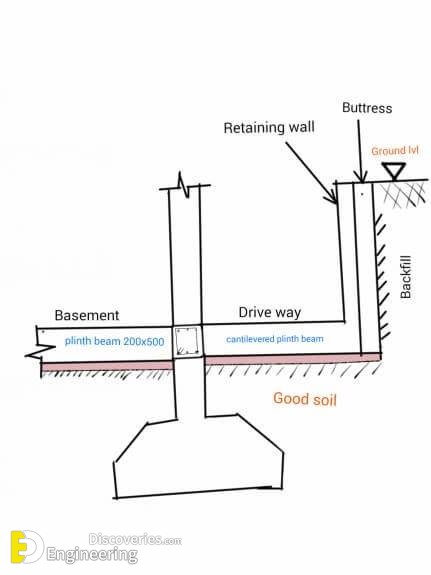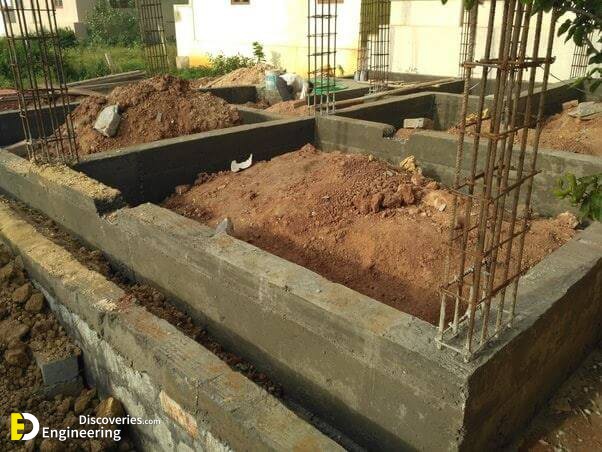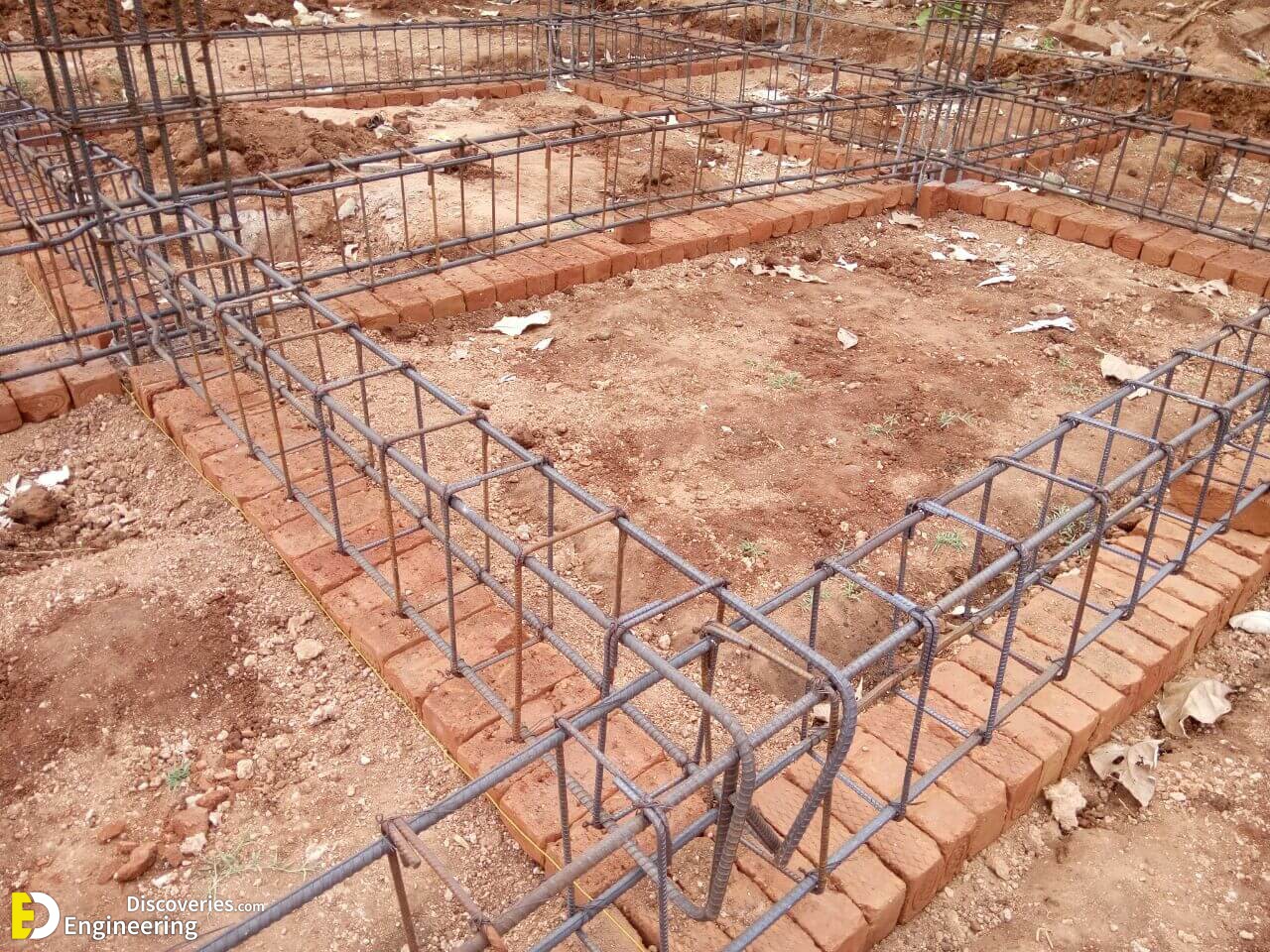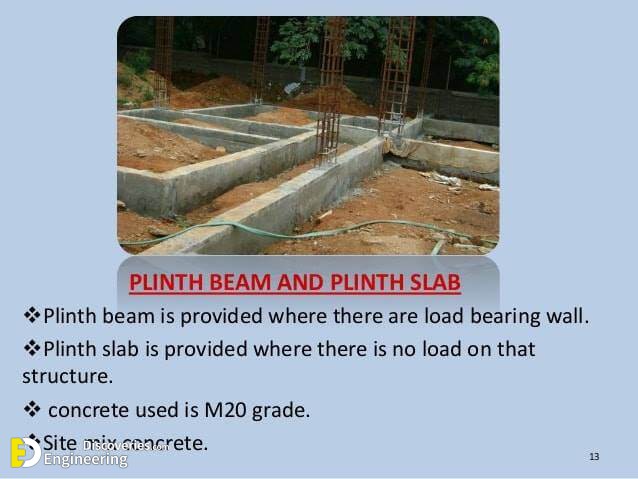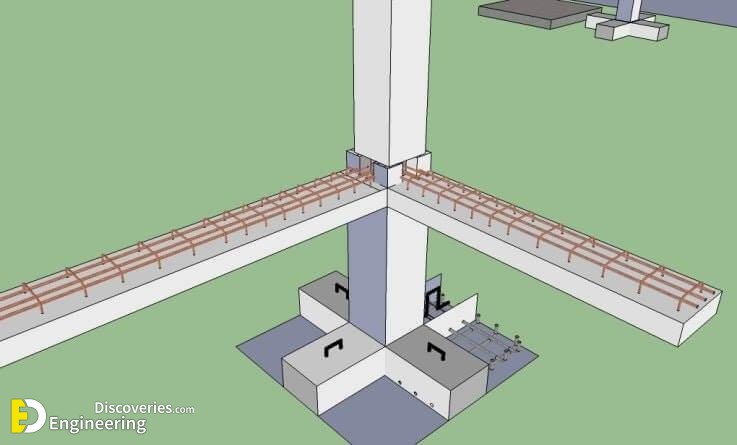Plinth beam is a beam in a framed structure provided at or above (sometimes below) ground level that takes the load of the wall built on top of it. Most other beams are subjected to loads not only from walls but also the load from the slab, such as dead loads (self-weight of the slab, floor finish ets.) and live load. Plinth beams also serve another indirect purpose – they reduce the length of the columns thereby reducing their effective length and slenderness.
Purpose of Plinth Beam
1. Plinth beam prevents differential settlement in structures because all the load coming on the plinth beam is uniformly transferred to the foundation.
Hence, prevent differential settlement.
2. It prevents the dampness from the foundation to enter the building.
3. It ties all the column.
4. It prevents cracks from the foundation to reach the wall.
5. It prevents the building to collapse during an earthquake.
6. Plinth Beams distribute the load uniformly.
Minimum Dimension of a Plinth Beam
A minimum depth of plinth beam is 20cm whereas its width should match the width of the final course of the foundation.
Steel Bars Used for Plinth Beam
It is recommended to provide two bars with a minimum diameter of 12mm at the bottom of the beam. Similarly, two bars with a minimum diameter of 10mm shall be provided at the top of the plinth beam. Reinforcement bars should be protected by 25mm concrete cover. As far as stirrups are concerned, the stirrup diameter should be at least 6mm and spacing of 15cm should be sufficient.




